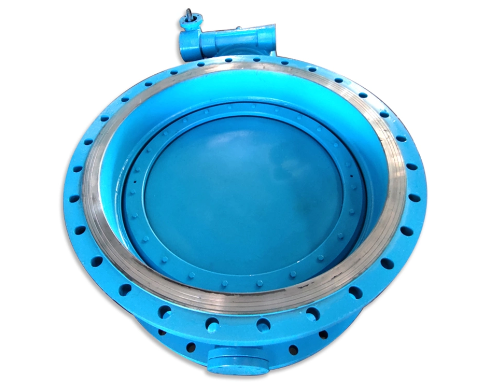Butterfly valves are a common type of flow control valve used in a variety of industrial applications. However, standard butterfly valves have some limitations with respect to efficiency and tight shut-off performance. This is where double offset butterfly valves come in.

This blog post will discuss double offset high performance butterfly valve, covering:
• What is a double offset butterfly valve?
• How do they provide improved performance?
• Main features and benefits
• Typical applications
• Best uses
• Factors to consider when choosing a double offset butterfly valve
What Is A Double Offset Butterfly Valve?
A double offset butterfly valve as high performance butterfly valve, has a similar design to a standard butterfly valve, featuring a disc that rotates within a valve body to control the flow of liquids and gases. However, instead of a disc that fits directly against the seat, a double offset butterfly valve’s disc is offset from the seat in two directions:
- The disc is offset radially outward from the center of the valve.
- The disc is also offset vertically away from the seat.
- This double offset design provides several performance benefits when compared to standard butterfly valves.
How Do They Provide Improved Performance?
The double offset design provides three main advantages:
Improved sealing – As the disc approaches the seat, fluid is squeezed out from the sides due to the radial offset. This creates an enhanced seal between the disc and seat for a better shut-off.
Reduced torque – Since the disc does not touch the seat, friction is reduced. This allows the valve to be operated with lower torque and less wear on stem seals and bearings.
Lower pressure drop – The vertical offset provides more clearance for fluid to flow through when open, resulting in a lower pressure drop across the valve when compared to standard butterfly valves.
Features & Benefits Of Double Offset Butterfly Valves
• Bubble-tight shutoff – Eliminates fluid leakage common to traditional butterfly valves
• Low stem friction – Minimal stem thrust and bearing wear enables long service life
• Low operating torque – Easy open/close operation even on large valves
• High flow efficiency – Pressure drop of just 2-5% when fully open
• Compatible with a range of fluids – Suitable for liquids, gases, slurries and steams
• Fewer moving parts – Simple and robust design still provides excellent performance
Typical Applications
Some common applications for double offset butterfly valves include:
• Pulp and paper plants – For process control of pulp stock, white and black liquor
• Power plants – Used in boiler feedwater, condensate and circulation water systems
• Petrochemical plants – Found in distillation towers, process lines and aromatics plants
• Oil and gas facilities – Deployed in LNG terminals, pipelines and offshore platforms
• General industrial – For flow control of liquids, slurries, gases and steam in manufacturing plants
• Wastewater treatment – Regulating flow in primary sedimentation, aeration and other systems
Best Uses for Double Offset Butterfly Valves
The best applications for double offset butterfly valves are those requiring:
• Tight shutoff – Nearly zero leakage, especially for isolating or throttling compressible fluids
• Low operating torque – Where stem loads and actuator sizing are a concern
• Minimal pressure drop – Where efficiency is important to reduce pumping loads and costs
• Ability to handle particles – Suitable for slurries and other fluid streams with entrained solids
• Infrequent operation – Recommended for predominantly on/off service as opposed to modulating
Factors To Consider When Choosing
Look for a valve with:
• Proper pressure/temperature ratings for your system
• Disc and seat materials compatible with your fluid type and properties
• An actuator able to provide the torque required for valve operation
• Suitable connection types that match your line piping
• Optional features like a lockable handwheel for manual valves and an internal coating for abrasive fluids
• Third-party certification from an organization like ASME or ISO